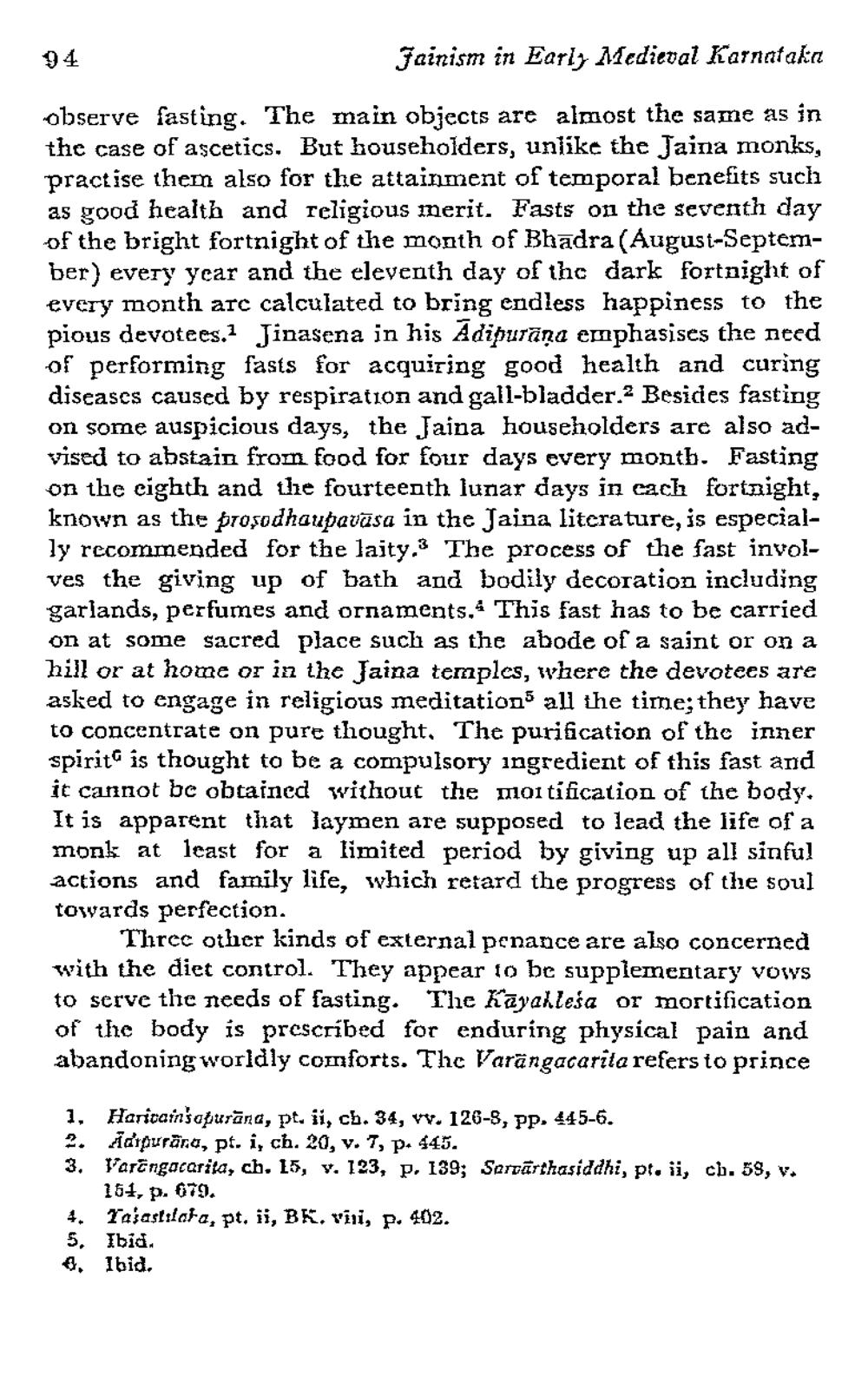________________
94
Jainism in Early Medieval Karnataka
observe fasting. The main objects are almost the same as in the case of ascetics. But householders, unlike the Jaina monks, practise them also for the attainment of temporal benefits such as good health and religious merit. Fasts on the seventh day of the bright fortnight of the month of Bhadra (August-September) every year and the eleventh day of the dark fortnight of every month arc calculated to bring endless happiness to the pious devotees. Jinasena in his Adipurāņa emphasises the need of performing fasts for acquiring good health and curing diseases caused by respiration and gall-bladder.2 Besides fasting on some auspicious days, the Jaina householders are also advised to abstain from food for four days every month. Fasting on thc cighth and the fourteenth lunar days in each fortnight, known as the proşodhaupavāsa in the Jaina literature, is especially recommended for the laity.3 The process of the fast involves the giving up of bath and bodily decoration including garlands, perfumes and ornaments. This fast has to be carried on at some sacred place such as the abode of a saint or on a hill or at home or in the Jaina temples, where the devotees are asked to engage in religious meditations all the time; they have to concentrate on pure thought. The purification of the inner spirit is thought to be a compulsory ingredient of this fast and it cannot be obtained without the montification of the body. It is apparent that laymen are supposed to lead the life of a monk at least for a limited period by giving up all sinful actions and family life, which retard the progress of the soul towards perfection.
Three other kinds of external penance are also concerned with the diet control. They appear to be supplementary vows to serve the needs of fasting. The Kayalleśa or mortification of the body is prescribed for enduring physical pain and abandoning worldly comforts. Thc Varängacarita refers to prince
1. Haritain'sapurāna, pt. ii, ch. 34, vv. 126-8, pp. 445-6. 2. vidrourāra, pt. i, ch. 20, v. 7, p. 445. 3. Varingacarita, ch, 15, v. 123, P. 139; Servārthasiddhi, pt. ii, ch.59, v.
164, p. 679. 4. Tajaststata, pt. ii, BK. vīvi, p. 402. 5. Ibid. 6. Ibid.




